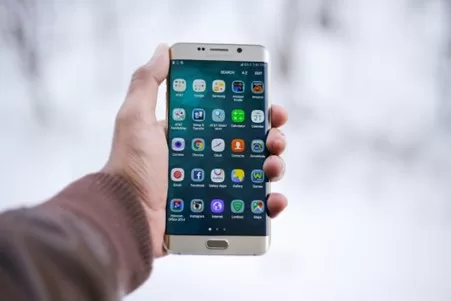Library mobile apps are adding a new dimension to the way patrons interact with libraries, providing instant access to a wealth of information and resources. These apps are designed to bring the full range of library services to users' fingertips, making libraries more accessible and user-friendly than ever before.
What is a Library Mobile App?
A library mobile app is a software application designed for smartphones and tablets that provides users access to a library's resources and services. These apps offer a range of functionalities, from searching the catalog to managing accounts, making them an indispensable tool for modern library patrons.

Core Functions of a Library Mobile App
-
Catalog Search :
Users can explore and locate books, journals, multimedia materials, and other resources available within the library's collection. This feature allows for quick searches based on titles, authors, subjects, and more, ensuring accurate retrieval of information.
-
Account Management :
Patrons have control over their library accounts directly through the app. They can view their borrowed items, check due dates, manage fines, and receive notifications about overdue materials, ensuring they stay informed and organized.
-
Digital Borrowing :
With the capability to borrow e-books and audiobooks digitally, users can enjoy reading or listening to their favourite titles directly from their mobile devices. This feature expands access to the library's digital collection, promoting convenience and flexibility in reading habits.
-
Reservations and Renewals :
Patrons can reserve items that are currently checked out by other users and renew borrowed materials with ease through the app.
-
Event Information :
Apps allow you to stay updated with a library's calendar of events, including workshops, seminars, author talks, and other community programs. Users can access event details, register for sessions, and add events to their personal calendars directly from the app
-
Notifications :
The app keeps patrons informed with timely alerts and notifications. Users receive notifications for due dates approaching, availability of reserved items for pickup, and important library announcements. These notifications ensure that patrons never miss crucial updates and deadlines.
In addition to these core functionalities, library mobile apps often integrate other features to enrich the user experience further. These may include:
- Personalized Recommendations : Utilizing algorithms to suggest books and resources based on users’ borrowing history and preferences, for better discovery and promoting exploration of diverse materials.
- Interactive Maps : Navigation aids within the library premises, guiding users to locate specific bookshelves, study areas, facilities like printers or scanners, and other points of interest.
- Social Features : Platforms for users to share book reviews, recommendations, and participate in discussions or reading groups, building a sense of community among library patrons.
- Accessibility Enhancements : Features such as text-to-speech capabilities for visually impaired users, adjustable font sizes, and language options to accommodate diverse linguistic backgrounds, ensuring inclusivity
- Integration with Digital Libraries : Access to online databases, academic journals, and research repositories, expanding the scope of information available beyond physical holdings.
- Augmented Reality (AR) : Innovative AR features that overlay digital information onto physical library spaces, providing interactive experiences for users browsing shelves or exploring exhibits.
The Need for a Library Mobile App
In today’s digital world, the need for a library mobile app is more important than ever. Patrons expect convenient, instant access to information and services, which traditional methods can no longer fully provide. A library mobile app meets this demand by offering a complete platform where users can search for materials, manage their accounts, and access digital resources anytime and anywhere. It bridges the gap between physical and digital library experiences, catering to tech-savvy users who prefer interacting with services through their mobile devices. Moreover, it supports the library's mission of inclusivity by making resources more accessible to individuals with mobility issues or those living in remote areas, thus making sure that everyone can benefit from the library's offerings.
Steps to Create a Successful Library Mobile App
-
Needs Assessment :
Identify the needs and expectations of the library patrons. Gather input from staff and users to determine the essential features.
-
Planning :
Define the scope of the app, including features, target audience, and budget. Create a project timeline and allocate resources.
-
Development :
Choose a development platform (iOS, Android, or both). Build the app using suitable technology stacks, ensuring integration with the library's existing systems.
-
Testing :
Conduct thorough testing to identify and fix bugs. This includes functional testing, usability testing, and performance testing.
-
Launch :
Deploy the app on relevant app stores. Ensure the launch is supported by a marketing campaign to inform patrons about the new app.
-
Feedback and Updates :
Gather feedback from users to identify areas for improvement. Regularly update the app to add new features and improve performance.
-
Design :
Develop a user-friendly interface with the help of developers with a focus on ease of navigation. Consider accessibility standards to ensure the app is usable by all patrons.
Benefits for Libraries and Users
For Libraries :
-
Increased Engagement :
Mobile apps keep patrons engaged with the library's services, increasing usage and participation.
-
Automated Operations :
Automation of routine tasks like renewals and reservations reduces the workload on library staff.
-
Data Insights :
Collecting data on app usage helps libraries understand patron needs and preferences, enabling better service provision.
For Users :
-
Convenience :
Access library resources anytime, anywhere from your Smartphones , Tabs etc
-
Time-Saving :
No need to visit the library for every task, such as renewing books or checking availability.
-
Accessibility :
Improved access to digital resources, making it easier for those who cannot visit the library physically.
-
Personalized Experience :
Customizable notifications and recommendations to impeove the user experience.
Conclusion :
In conclusion, library mobile apps are changing how libraries serve their communities. They're not just about borrowing books anymore. These apps make it easier for people to explore and learn using their phones or tablets. By combining traditional library services with modern technology, they give everyone more ways to connect with knowledge and each other. As technology keeps improving, libraries can keep finding new ways to help people learn and grow. This makes libraries even more important in our digital world, where information is always at our fingertips.
